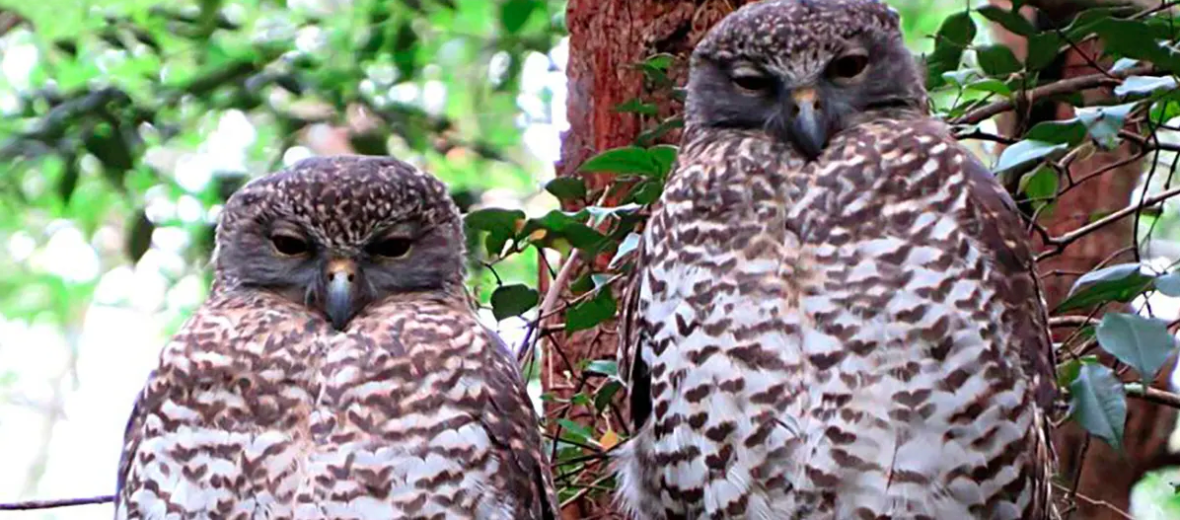
The powerful owl is a species native to southeastern and eastern Australia. These owls are found in coastal areas and in the Great Dividing Range typically less than 125 miles inland. The powerful owls are typically found in open forests and woodlands, as well as in wet forests with dense undergrowth. They can also be found in open areas near forests and farmland, parks, and suburban areas.
First the Stats…
Scientific name: Ninox strenua
Weight: Up to 3+ lbs.
Length: Up to 23+ inches
Wingspan: Up to 53+ inches
Lifespan: Up to 30+ years
Now on to the Facts!
1.) Like other owls, they are nocturnal (active at night).
2.) This owl is a carnivore (eats meat), eating primarily medium to large tree-dwelling mammals, like the ringtail possum and the greater glider. These birds will also take roosting birds and occasionally even small ground-dwelling mammals like small marsupials and rabbits.
3.) Young birds are occasionally killed by cats, dogs, and foxes.
4.) The powerful owl is monogamous (mates for life).
5.) Males are responsible for building the nest, which they make from a hollow in large trees.
But wait, there’s more on the powerful owl!
6.) Females incubate the eggs and rear their young.
7.) They breed during winter, with each female typically laying eggs on almost the same date each year. They typically lay 2 eggs, 4 days apart.
Did you know…?
The powerful owl is the largest owl in Australia!
8.) These owls are negatively affected by land clearing, but can still live in fragmented habitats like farms and even suburban areas.
9.) They can sometimes be spotted in family groups of 3 – 4 raptors.
10.) The male’s call is a mournful-sounding, double-hoot, “whoo-hooo”. The female’s calls are similar, but higher pitched.
Now a Short Powerful Owl Video!
Also, check out the Critter Science YouTube channel. Videos added frequently!
Want to suggest a critter for me to write about? Let me know here.



